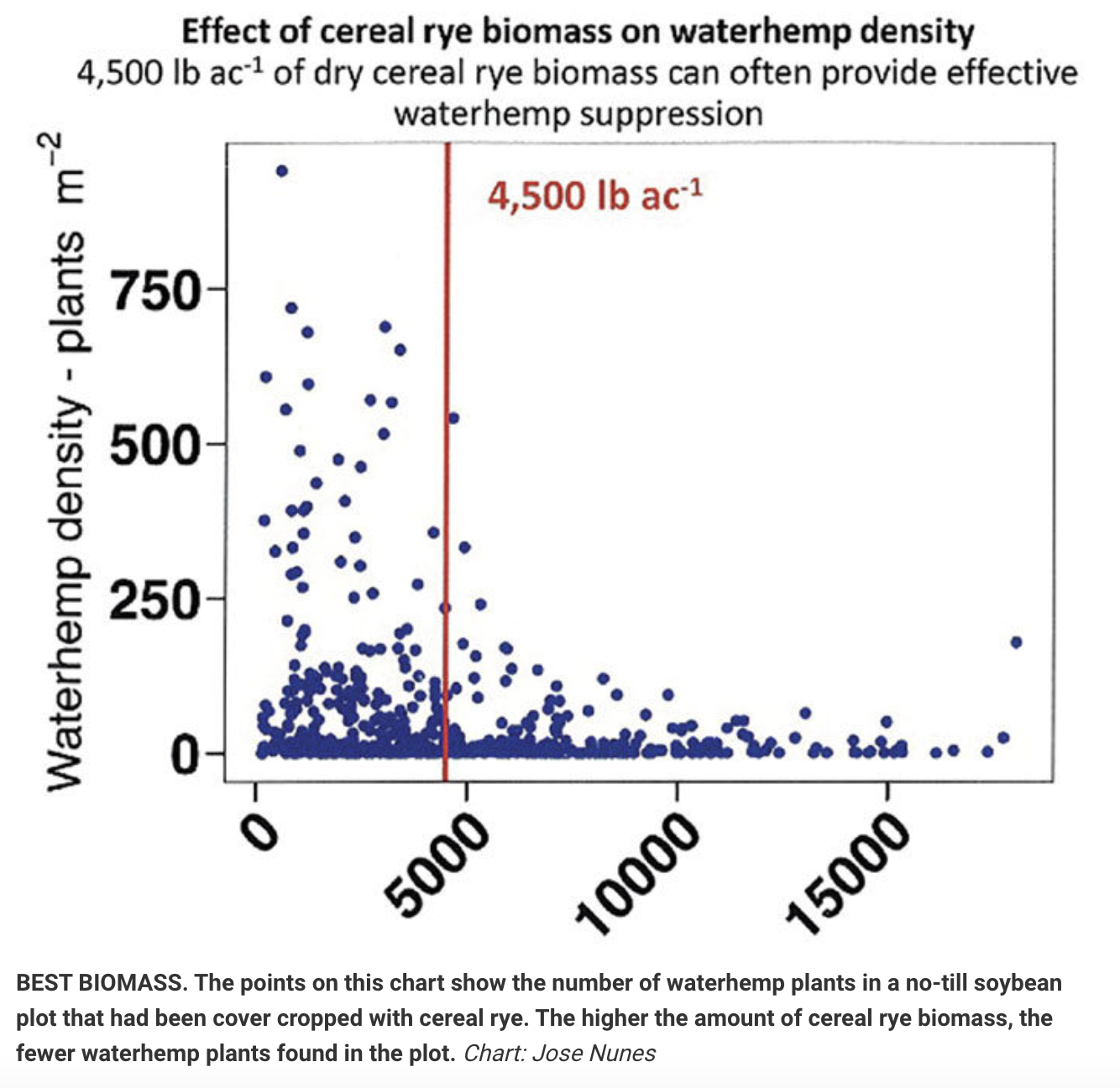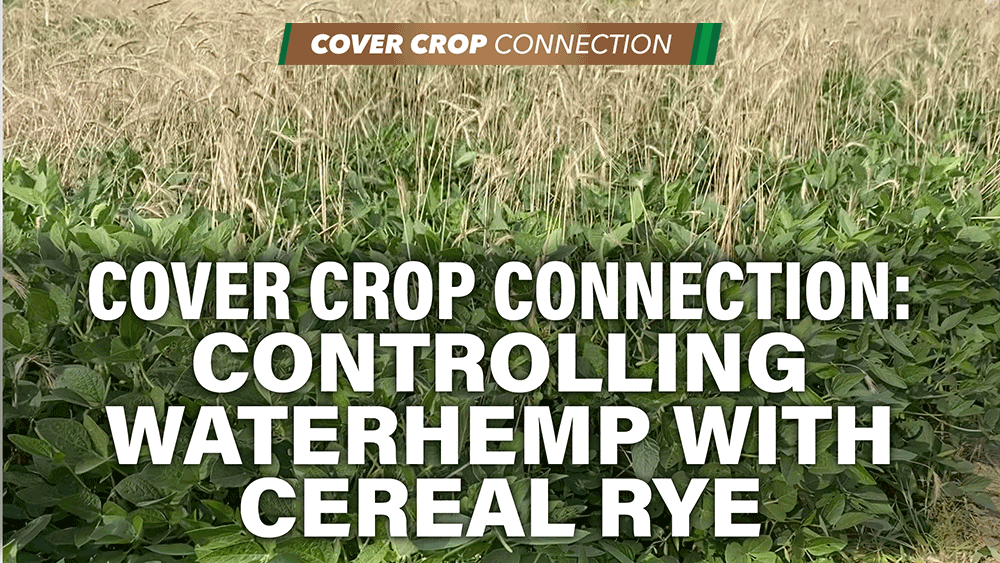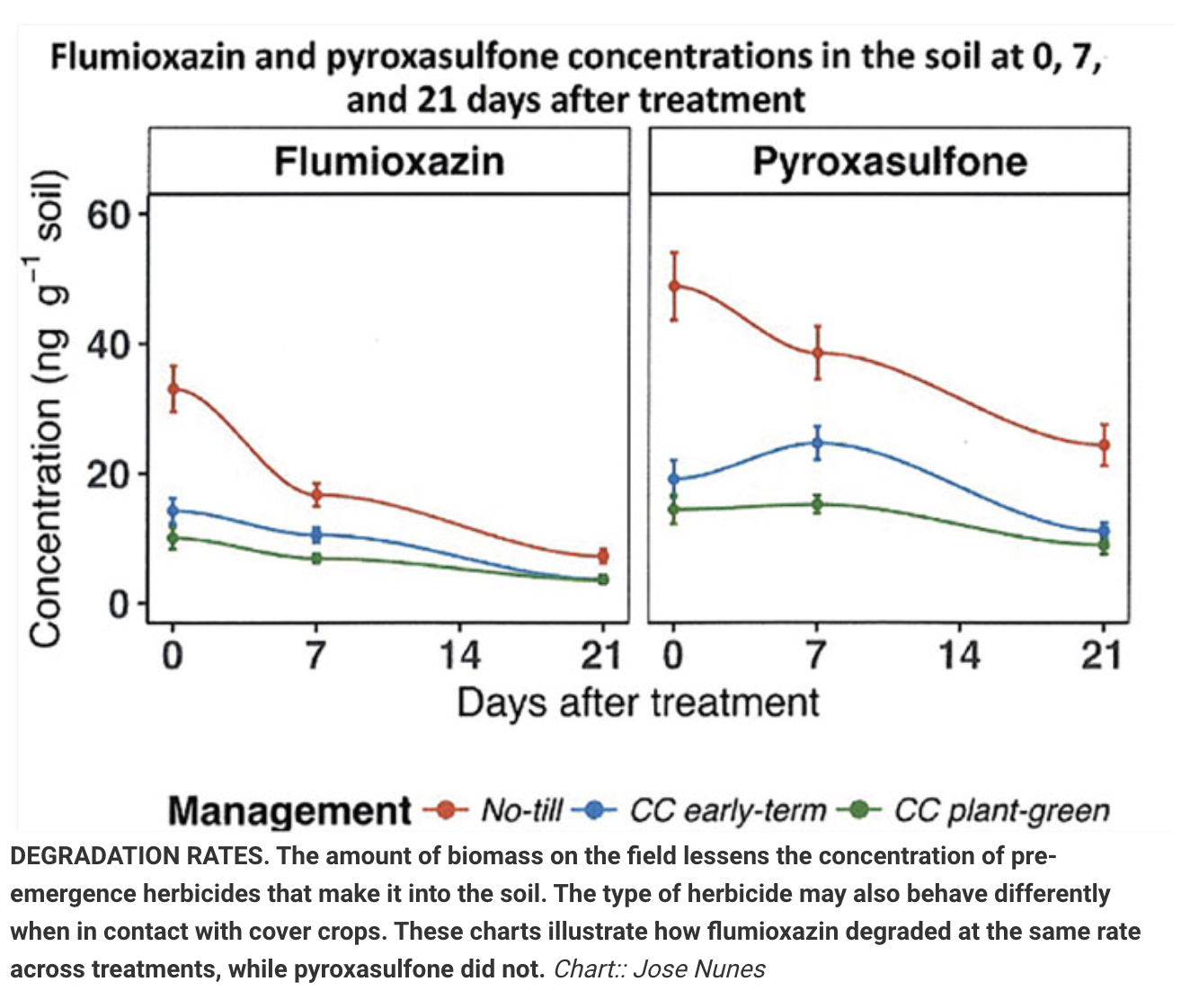Cereal rye can be used to suppress weeds. At this Brooklyn, Wisconsin, field day, Jose Nunes, a graduate student at weed scientist Rodrigo Werle’s UW-Madison research and extension lab, shared his findings about how much cereal rye biomass is needed for optimal weed suppression.
“When it comes to weed suppression, waterhemp suppression in my case, which is the weed that I’ve been working with, we need biomass. When we increase the biomass we also increase the suppression, so there are fewer waterhemp plants in the plot and the more biomass, the better the weed suppression.”
“But if you notice on that plot, when we go beyond 4500 pounds per acre of dry biomass, that’s when we start to see a good separation in waterhemp density. So, if you ask us today, how much is good enough, I would say 4500 pounds, oftentimes can provide the effect of waterhemp suppression. If you talk about different weed species like gant rag which is a large broadleaf seed weed, you will probably need more.”

|
|
His research also showed the importance of using a cover crop along with an herbicide program for successfully suppressing weeds.
A cereal rye cover crop shouldn’t be a substitute for herbicide applications, Nunes says, because the pre-emergence herbicide is needed for residual weed control.
To learn more about Nunes’ research, head to no-tillfarmer.com to read a summary of the topics discussed at the Brooklyn, Wisconsin field day.







Post a comment
Report Abusive Comment